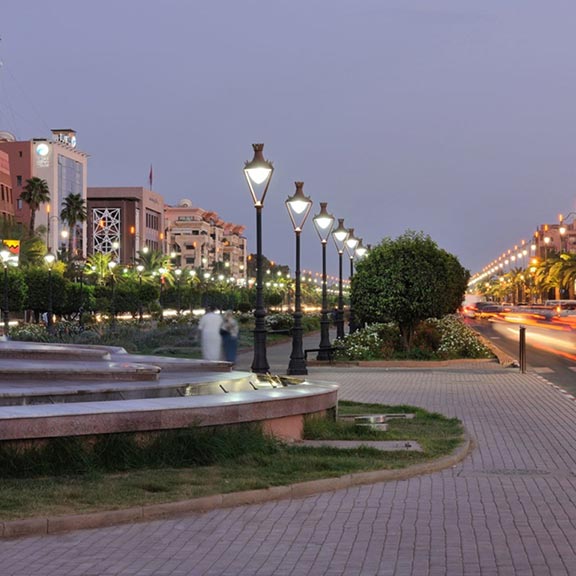Marrakesh is the fourth largest city in Morocco. It is one of the four Imperial cities of Morocco and the capital of the Marrakesh-Safi region. It is situated west of the foothills of the Atlas Mountains. The city was founded in 11th century. Marrakesh, known as the red City. The city owes this name to its 13- km long ramparts, an absolute must-see, which surround the old town: the medina. The modern quarter, called Gueliz, to the west of the medina developed under the French protectorate. Marrakesh comprises an old fortified city packed with vendors and their stalls. This medina quarter is a UNESCO World Heritage Site. Marrakesh has the largest traditional market (souk) in Morocco, with some 18 souks. Crafts employ a significant percentage of the population, who primarily sell their products to tourists.
Marrakesh is served by Ménara International Airport and by Marrakesh railway station, which connects the city to Casablanca and northern Morocco. The Marrakesh Street Circuit hosts the World Touring Car Championship, Auto GP and FIA Formula Two Championship races. The city is located in the Tensift River valley,[71] with the Tensift River passing along the northern edge of the city. The Ourika River valley is about 30 kilometres (19 mi) south of Marrakesh. Average temperatures range from 12 °C (54 °F) in the winter to 26-30 °C (79-86 °F) in the summer. The relatively wet winter and dry summer precipitation pattern of Marrakesh mirrors precipitation patterns found in Mediterranean climates. However, the city receives less rain than is typically found in a Mediterranean climate, resulting in a semi-arid climate classification.
An essential stop in your visit: the medina and the souks. There you can really feel the magic of Marrakesh. in the alleys of the medina, architecture and history lovers can, as they wish, visit the stunning Medersa Ben Youssef, the Marrakesh Museum or the almovarides Quobbat
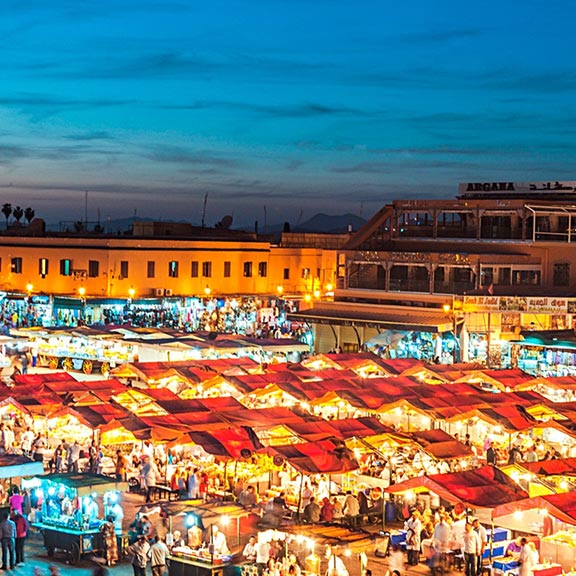
This medina quarter is a UNESCO World Heritage Site. Marrakesh has the largest traditional market (souk) in Morocco, with some 18 souks. Crafts employ a significant percentage of the population, who primarily sell their products to tourists.
Souk is known for its sophisticated woodwork and beautiful crafts made by skilled artisans. At Souk Nejjarine you can find a variety of goods including fine wooden boxes, furniture, jewellery and traditional Moroccan musical instruments such as the oud and the darbuka
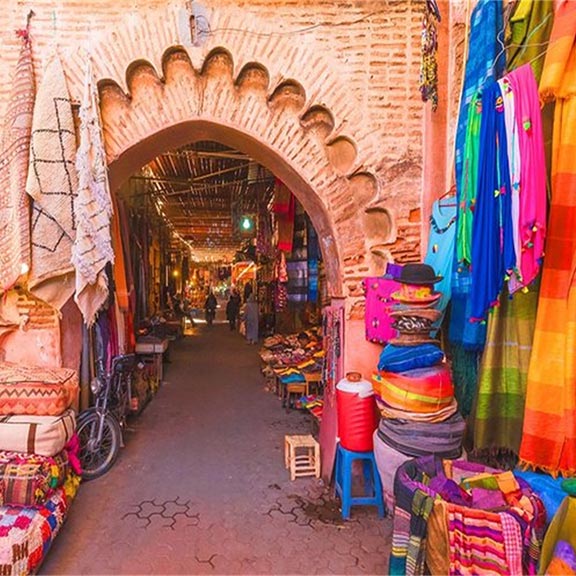
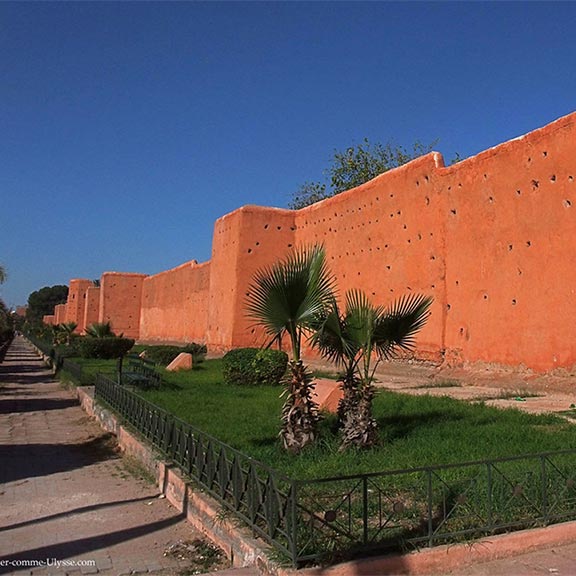
The symbol of the red city, the ramparts which construction, commissioned by Ali Ben Youssef, began in 1126, surround the old town today: the medina. It took decades to build the ramparts so that the adobe and clay-made walls would reach more than 10 km.
Lining the ramparts, those gardens have been recently planted by the Town Council. All along the street embellished with flowers and plants, public benches have been installed, giving people the chance to rest in the ramparts shade, symbol of the ochre city. Bringing a touch of greenery and freshness, they reinforce the attraction of the site, a spot where the people who live in the area like to get together.
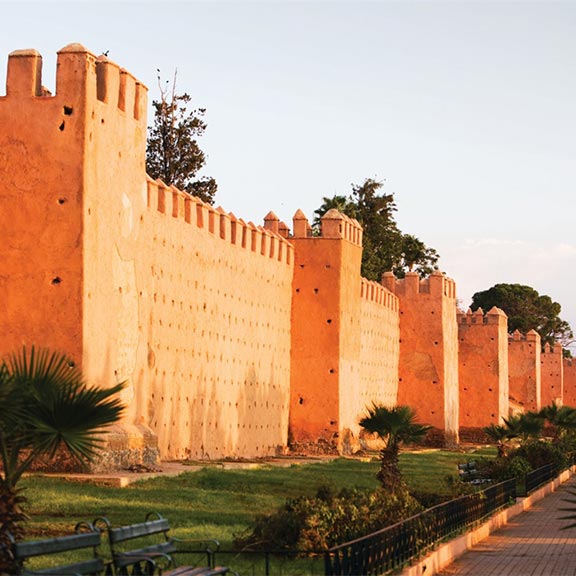
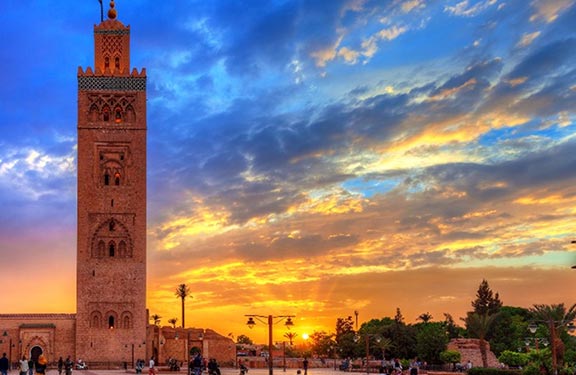
The Koutoubia, the most known and visited monument in the city, thanks to its superb minaret, true architectural master-work of Hispano-Moorish influence is next to a pleasant green area, the Lalla Hassna Park which spreads over an area of some two hectares of rose trees romantically trimmed.
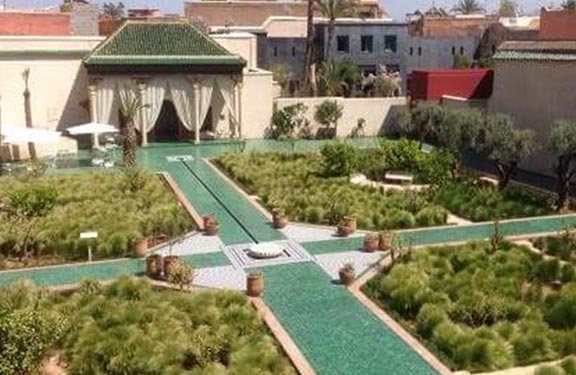
The one of the biggest and of the oldest riads of the medina of Marrakesh. The origins of the complex date back in the time of the Saadiens dynasty, more than four hundred years ago. Reconstructed in the middle of the XIXth century by an influential boss of the Atlas, the Secret Garden was the abode of few of the highest political personalities of Morocco and Marrakesh
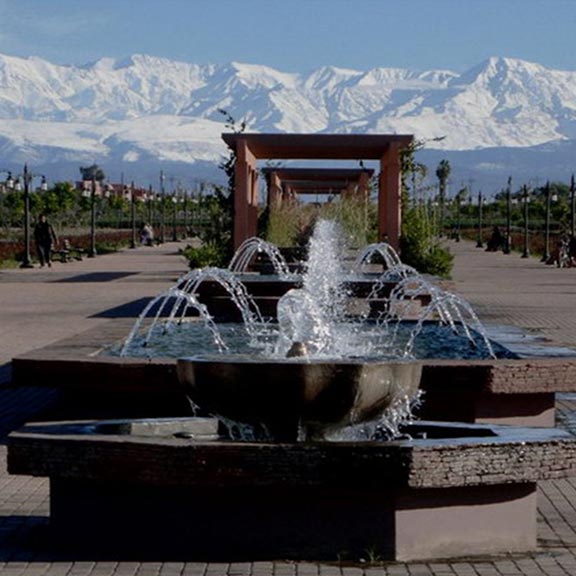
The central flowerbed of the artery is planted of palm trees, fruit trees and tens of thousands of flowers. Summer evenings, moroccans appreciate to picnic in family, there to take advantage of a relative freshness. In winter, the view is cleared on the Atlas. The place offers a fantastic view over the Atlas mountains. You will find numerous hotels, as well as restaurants, coffees with big terraces, places of animation and shopping.
The remarkable layout of this long avenue in the Hermitage neighbourhood, with its wide alleys lined with palm and orange trees and benches, fountains and pergolas, will allow you to visit one of the elegant areas of the new town where you can admire works of modern art such as: the Royal Theatre, the new rail station, the Palais des Congres (Convention Centre) and a large number of luxurious villas and well-known hotels.
